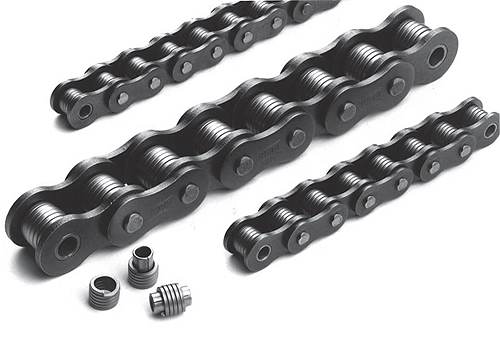Updated April 2015. || In any motion control system, the object is ultimately to move some kind of load. The component in the motion system that converts electrical energy into mechanical energy is the motor. But the task doesn’t end there. A motor’s output shaft has to connect somehow to whatever the load is.
This final connection can take many forms. Some of the most efficient ways to connect with the load are so-called direct drive methods, where the motor is directly coupled to the load. When this isn’t feasible, various intermediary methods are available to couple the motor to the load. One of these is a roller chain.
Read the related article: How to Size and Select Roller Chain: An Engineer’s Guide
Roller chains have the benefit of being a fairly straightforward and simple method of transmission of mechanical energy. Roller chains are constructed like a typical chain link structure; that is, a series of cylindrical rollers connected by links. A rotating sprocket which is connected to the motor moves the chain. The other end of the chain can then be connected to some part of the load.
On the down side, chains wear out over time and when they do the pitch increases, making them looser and more compliant, which can add instability in the form of “play” into the system. Also, chains need to be lubricated to keep them operating effectively.
The primary factors that limit chain life are corrosion, wear, and fatigue. However, following a few simple guidelines can help extend the life of roller chains. For starters, in order to maximize useful life, chains should be properly lubricated to minimize wear. Also, corrosion can accelerate the effects of wear and fatigue. To combat this, make sure that the chain is protected. A properly lubricated chain can minimize exposure to the environment and extend product life.
Also, some manufacturers offer options to improve fatigue resistance including specially manufactured components such as hardened pins and rivets as well as optimized chain dimensions for given applications. However, the general rule for chains is that when a chain becomes between 1.5 and 2% longer than the original length, it begins to ride up the sprocket teeth. This is the point at which sprocket and chain wear accelerates.
Some manufacturers offer corrosion-resistant chains. These can be made from one of several types of materials including stainless steel, nickel-plated chains, titanium, or stainless steel chains combined with special polymers.



Leave a Reply
You must be logged in to post a comment.